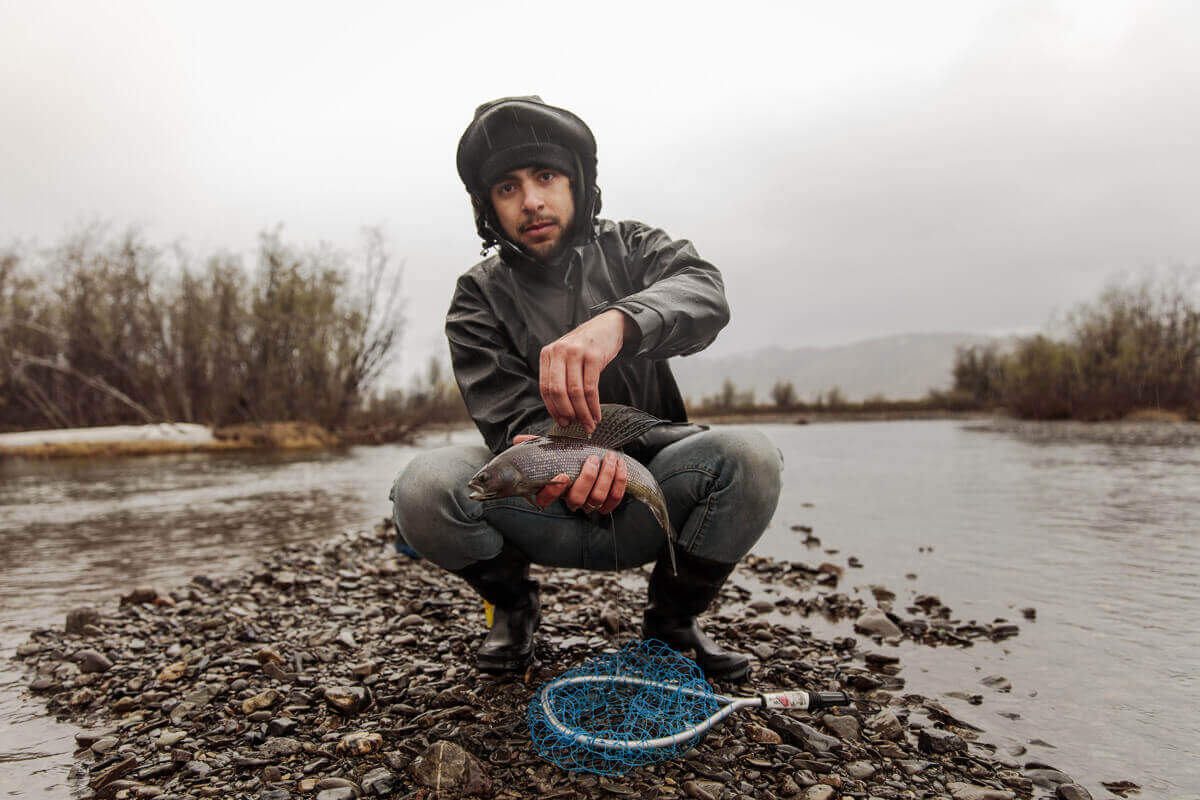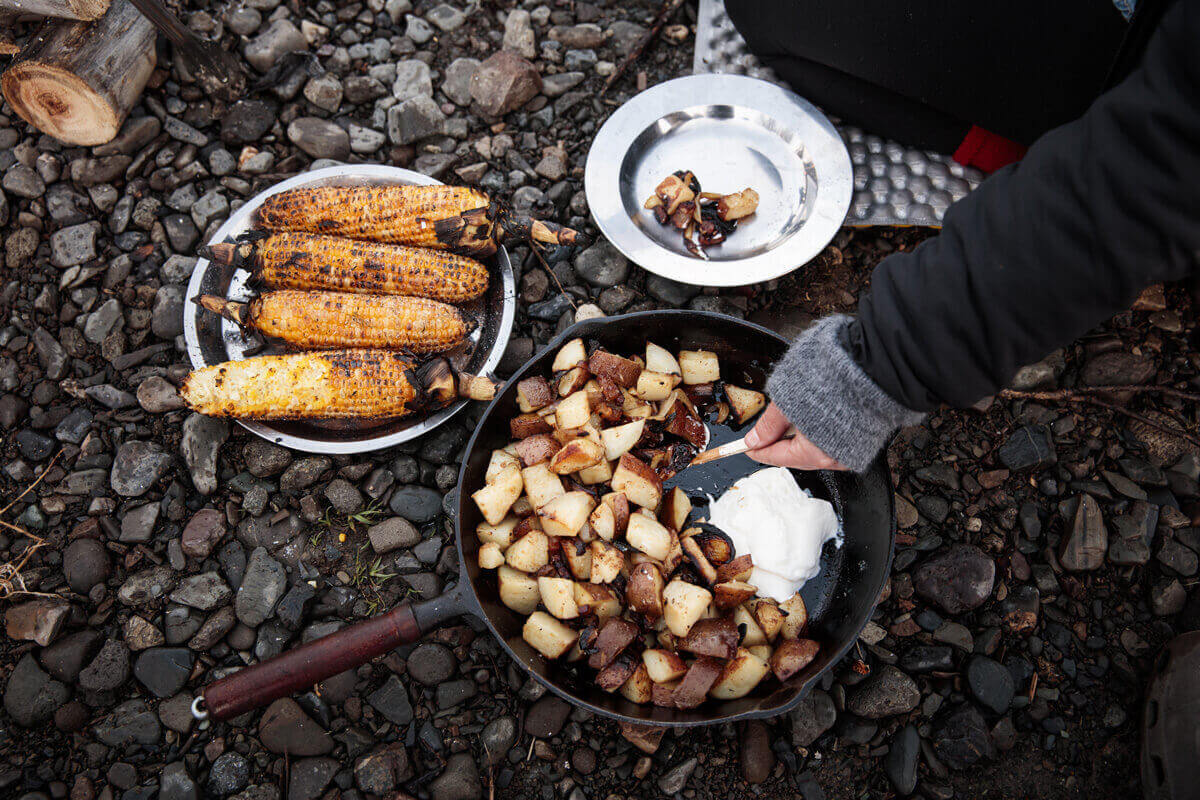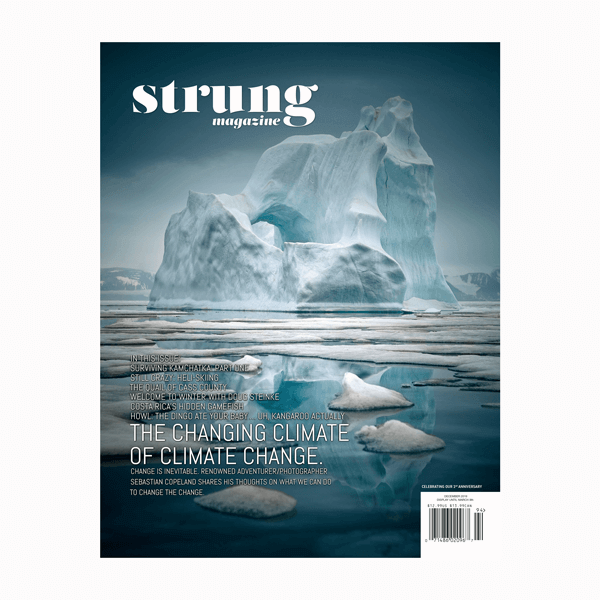photos and words by Joel Clifton
We spent most of the day in the truck, heading up the infamous Dempster Highway, a gravel road that runs some 900 kilometers (560 miles) north from the Klondike River crossing just outside Dawson City in the Yukon to Tuktoyaktuk, on the shore of the Arctic Ocean in the Northwest Territories. The highway winds and climbs its way out of the boreal forest and through boggy alpine meadows in the Tombstone and Blackstone mountain ranges before finally reaching the Arctic tundra, which lies flat like a living carpet to the sea.
We were heading for the Blackstone River in the middle of Tombstone Territorial Park in search of big and (more importantly) beautiful Arctic grayling. A week ago, we’d met with Whitehorse guide and fly shop owner Steve Hahn for some tips, and he told us that the Blackstone was known to hold some of the strongest and most beautifully colored grays in the Yukon. He also told us that he hadn’t been up there since the previous season, and there was no telling what condition the river was in, and that it may still be too early in the season for the fish to be there. Having had luck on the Klondike the day before, our hopes were sky-high, and we were excited to see what the remote river had in store for us.
Once in the park, we stopped to hike up a ridge to get a better view of our surroundings and place ourselves within the immense landscape. The vast tundra stretched on to mountains on the horizon. It was wet and deep underfoot, and the going was slow and arduous. The ground resembled the seafloor, and we placed each foot carefully and gently in order to do as little damage as possible to the multicolored mosses, lichens, and tiny flowers that covered it. As we were plodding along, I heard someone whisper, “Caribou.” We stopped dead in our tracks, slowly sat down, held our breaths, and scanned the ridge. In the distance we spotted two Caribou. They spotted us too and stood still, appraising us. I managed to sneak my long lens onto my camera without spooking them and make a couple of photos before they started off again on their journey. They moved effortlessly and quickly through the thick soggy moss. They were absolutely beautiful, and I could have spent hours following and watching them. We had other business to attend to, though. It was time to find the river.
We decided we’d throw in the towel
temporarily, make some dinner, drink a beer,
and get back at it later for another attempt.
Back in the truck, we continued north on the Dempster for another half hour or so and pulled off the highway onto an unmarked road early in the evening. We arrived at a campsite on the bank of the river and immediately geared up to fish. The Blackstone (which was running very low) wouldn’t be easy to crack. We walked the cold and clear river, with our heads on swivels and bear spray on our belts, for over an hour and had no luck in the fishiest-looking of spots. I got hung up a few times on snags and waded chest-deep to retrieve my fly. We decided we’d throw in the towel temporarily, make some dinner, drink a beer, and get back at it later for another attempt.
As we were making our way back to camp, something in the distance caught my eye. A family of otters was splashing about in a pool. As I got closer, I realized that what I was looking at weren’t in fact otters, but the dorsal fins of four or five grayling, moving in a tight circle, like sharks circling invisible prey. We were electrified.
We approached as slowly and as quietly as we could, and I, having spotted them, got to do the honors. My little Mosquito pattern, which had proven magnetic farther south in the days prior, landed well, and time stood still for a couple of seconds before it was all over. The fins disappeared beneath the glassy calm surface of the eddy and were gone. We each threw a few more casts in vain and, somewhat deflated, reeled in our lines and again started back for camp. We may have been a little bit disappointed, but the feeling quickly faded away when we looked around at the surrounding tundra and snowcapped mountains in the distance. We both laughed at how incredible this place was and what a journey we had undertaken to get here. We had driven 7,000 kilometers (4,350 miles) and had arrived in the North of our dreams. Fish or no fish, this is what we came for: the farness of everything, the peace, the wilderness, the quiet.
Ten minutes later, we were joking around and devising a plan for the next day when I spotted them. About 20 meters upstream from where we’d first seen them, four or five shadows were moving ever so slightly while hovering in a pool across the river from us. We got in close, and again I got the first cast. I laid my fly just right, but again, nothing. No interest at all. Benny tossed a little spinner at them and hooked up. He played the powerful fish out of the pool and downstream for me to net. She was dark blue and purple in color, with small red spots on her huge indigo dorsal fin.
We hooted, hollered, and hugged in celebration. Looking back, I’d say we were not so much celebrating the fish, but life in general. We’d come so far and had so many incredible experiences long the way. The fish was just an exclamation point at the end of a well-crafted sentence. I made some photos, tied on a heavier little cricket pattern, and cast again. I got down to the fish and immediately found one. We caught four beautiful grayling in quick succession, and they were just as Steve had predicted: incredibly colorful and powerful.
We kept a few for dinner and called it a night. It was Ben’s turn to clean and mine to cook. Our friends had the fire going when we got back to camp, and we feasted on grayling, corn on the cob, Yukon potatoes, and pickled garlic cloves. As we ate, a huge lynx appeared in the evening mist across the river from our camp. It looked like a ghost haunting the shoreline in the Arctic twilight. It sat down and watched us for a short time. I like to think it was just checking in on us and letting us know that we were in its home and that if we were respectful, we could stay. It was a banner day.
This trip to Tombstone really solidified in my mind what I love about fishing: time spent with good friends in beautiful places and putting in the effort to get out to a pool that’s potentially never been fished before. The Yukon is an incredible and humbling place where one can feel truly alone. I don’t have anything against other anglers, but that night, we had the river all to ourselves, and it was perfect. The grayling might not have been trophy fish, but finding and catching them was certainly a trophy experience.
AUTHOR BIO
Joel Clifton is a Canadian photographer and writer specializing in adventure tourism, lifestyle, and travel. He grew up in Ontario but nowadays spends the majority of his time on the road. Whether he’s fishing, climbing, paddling, or just out for a walk, he’d almost always rather be outside. He has been awarded scholarships from the World Press Photo Foundation and The Boreal Collective and was named an emerging photographer at the 2018 Palm Springs Photography Festival. www.joelclifton.com


